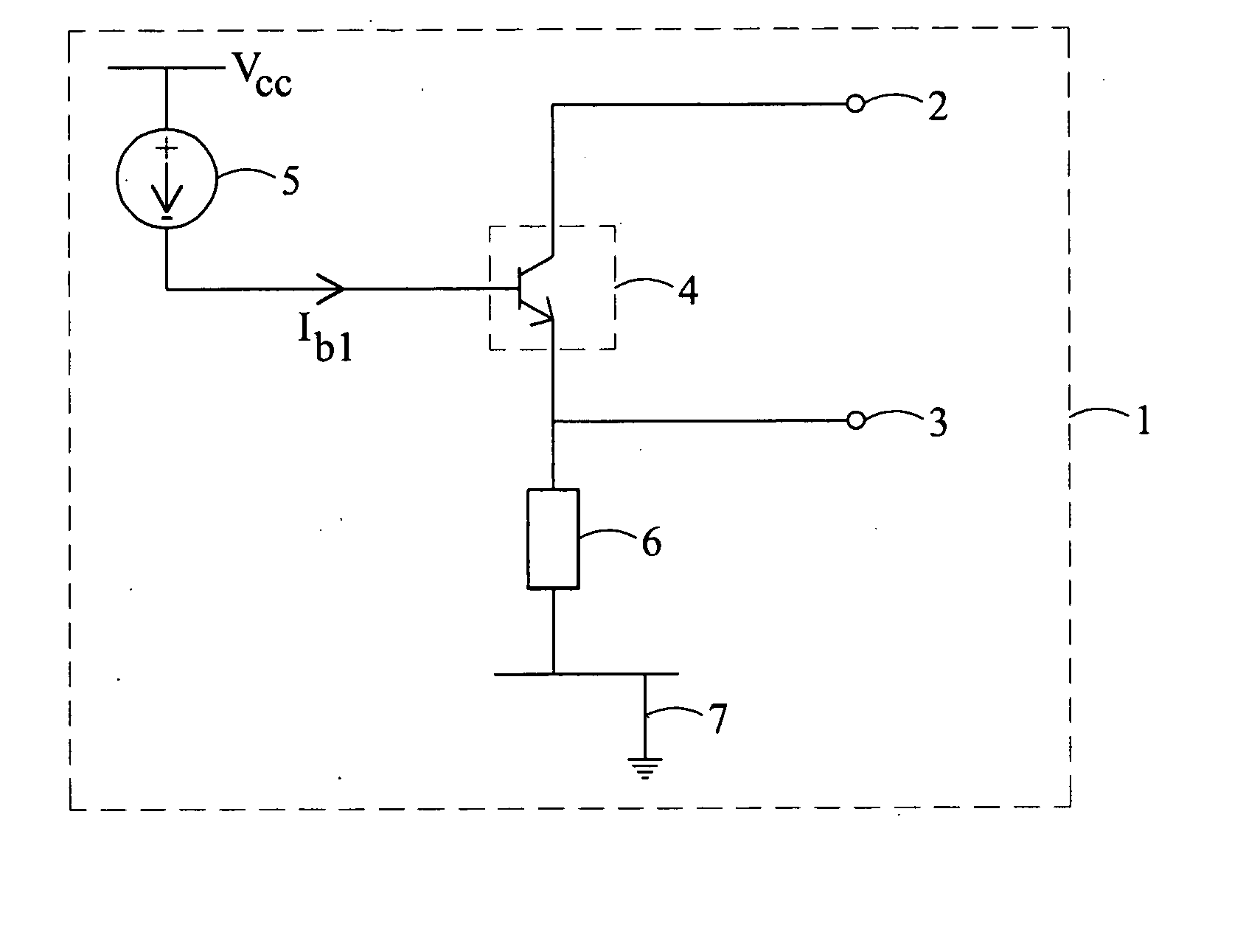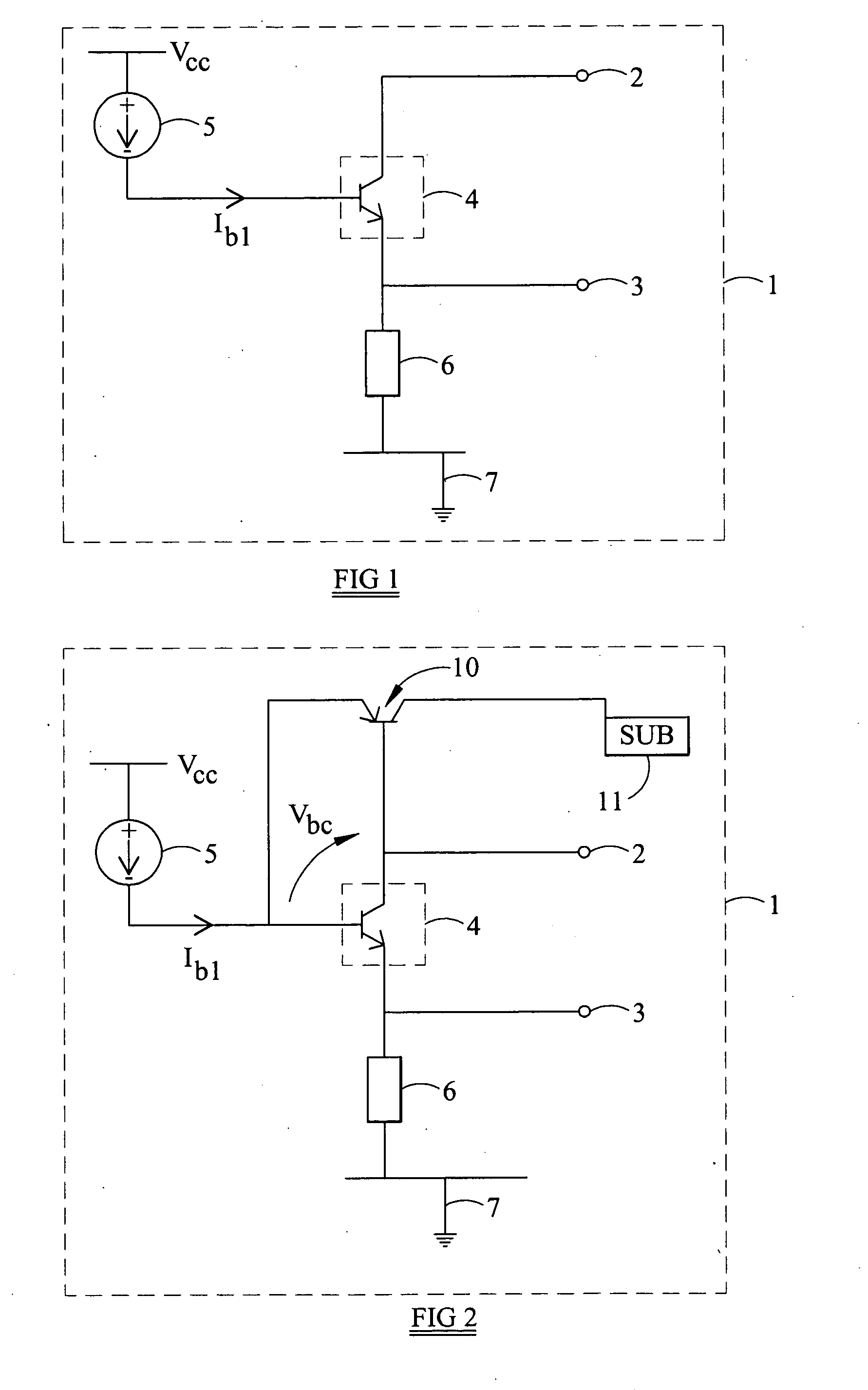Analogue switch
a technology of analog switch and offset voltage, applied in the field of analog switch, can solve the problems of increasing circuit cost, and achieve the effect of reducing the offset voltage across the switch and operating efficiently
- Summary
- Abstract
- Description
- Claims
- Application Information
AI Technical Summary
Benefits of technology
Problems solved by technology
Method used
Image
Examples
first embodiment
[0047] Referring now to FIG. 3 this illustrates an analogue switching circuit 20 in accordance with the present invention, which is a modification of the prior art analogue switching circuit of FIG. 1. Components common to the circuits of FIGS. 1 and 3 are identified by the same reference numerals. Switching circuit 20 comprises an analogue switch 21 in accordance with the present invention connected between the first and second switching terminals 2, 3. Switch 21 comprises a first bipolar transistor 22 having its collector connected to the first switch terminal 2 and its emitter connected to the second switch terminal 3. Switch 21 further comprises a second bipolar transistor 22 having its emitter connected to the first switch terminal 2 and its collector connected to the second switch terminal 3.
[0048] This back to back arrangement of transistors may be turned on, i.e. allowing current to pass between the switch terminals 2, 3 by applying control currents Ib1 and Ib2 to the bases ...
second embodiment
[0052] Referring now to FIG. 4, this illustrates a switching circuit comprising switching circuit 20 and a slave switching circuit 30 according to the present invention. Switching circuit 20 is identical to that shown in FIG. 3, except for the additional connections to slave switching circuit 30. The same reference numerals will be used to refer to components common to FIGS. 3 and 4.
[0053] Slave switching circuit 30 comprises a slave switch 31 connected between first and second slave terminals 32, 33. The slave switch 31 is a duplicate of the analogue switch 21, comprising third and fourth bipolar transistors 34, 35. Third transistor 34 has its collector connected to the first slave terminal 32 and its emitter connected to the second slave terminal 33. Fourth transistor 35 has its emitter connected to the first slave terminal 32 and its collector connected to the second slave terminal 33.
[0054] Third and fourth transistors 34, 35 are turned on by slave control currents Ib3 and Ib4 ...
PUM
 Login to View More
Login to View More Abstract
Description
Claims
Application Information
 Login to View More
Login to View More - R&D
- Intellectual Property
- Life Sciences
- Materials
- Tech Scout
- Unparalleled Data Quality
- Higher Quality Content
- 60% Fewer Hallucinations
Browse by: Latest US Patents, China's latest patents, Technical Efficacy Thesaurus, Application Domain, Technology Topic, Popular Technical Reports.
© 2025 PatSnap. All rights reserved.Legal|Privacy policy|Modern Slavery Act Transparency Statement|Sitemap|About US| Contact US: help@patsnap.com



